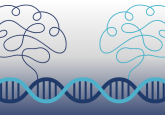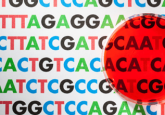Largest genetic investigation into osteoarthritis

A global team has analyzed data from nearly 2 million individuals, uncovering new genes and genetic pathways underpinning osteoarthritis.
A global collaboration of researchers led by Helmholtz Munich (Germany), including Rush University Medical Center (IL, USA) and 125 academic institutes, conducted the largest genetic investigation into osteoarthritis by analyzing data from nearly 2 million individuals. This investigation led to multiple new genes and genetic pathways being uncovered, providing a path for safe repurposing of approved drugs and accelerated translation.
Osteoarthritis, the most common form of arthritis, results from the gradual breakdown of cartilage in the joints, caused by an interplay between genetic and environmental risk factors. By 2050, it is estimated that 1 billion people worldwide will be affected by this painful condition.
The typical therapeutic management of osteoarthritis is pain relievers and mobility aids, with no disease-modifying therapies existing as of yet. As such, a better understanding of the biological processes that lead to disease development is needed to accelerate translation and improve patients’ lives.
To do this, the global team conducted a genome-wide association study meta-analysis across 1,962,069 individuals – 489,975 osteoarthritis patients and 1,472,094 controls – making this a substantial step up in sample size and power from previous studies. The team uncovered 962 genetic variants associated with osteoarthritis, 513 of which have not previously been reported.

Defying gravity: musculoskeletal aging models in space
Anne McArdle discusses the benefits of microgravity models in muscle aging research as well as how these models can inform intervention development.
The team then combined the genetic findings with functional genomics evidence from osteoarthritis-relevant tissue to identify effector genes that crossover on key biological processes related to disease development. The team uncovered several processes in which they found convergent involvement of multiple effector genes, including glial-cell-related processes and pathways with already established roles in osteoarthritis.
The team then highlighted 69 key effector genes whose protein products can already be targeted by 473 approved drugs. Many of these drugs could be repurposed to effectively manage osteoarthritis.
Commenting on the results, co-author Dino Samartzis (Rush University Medical Center) said, “This research is a beacon of hope. By leveraging human genetics, we can now reimagine much more effectively as to how we treat this widespread condition.”
While more genetically diverse research is needed to refine the results, this study provides insights into the genetic architecture of osteoarthritis and creates opportunities for accelerating translation.
“This is one of the finest examples of impactful team science,” concluded Samartzis. “Researchers and clinicians from across the globe united with a singular goal – to change the trajectory of osteoarthritis care for generations to come.”





